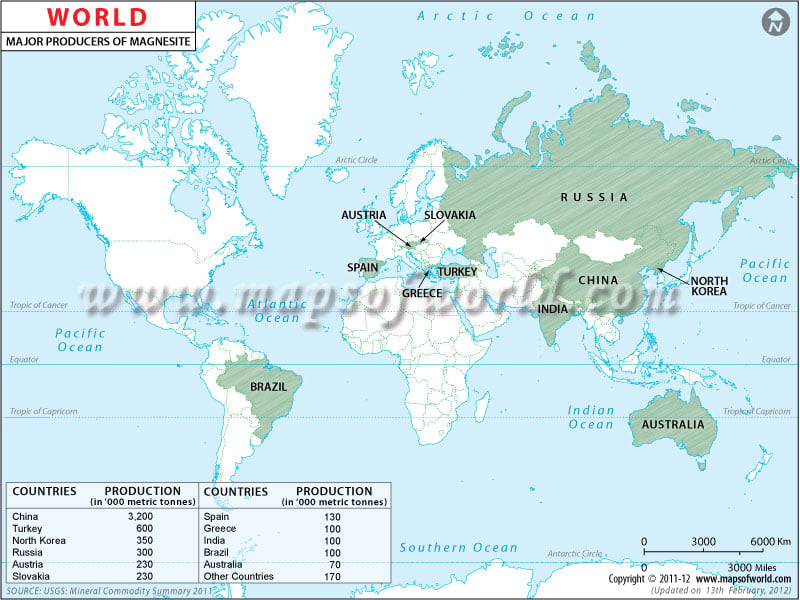Colorless, white, grayish white, yellowish white, brownish white, magnesite is a naturally occuring carbonate of magnesium. Earthy with a clay-like texture with no visible crystalline affinities, magnesite occurs as an evaporite mineral in sedimentary rocks.
Magnesite occurs in two distinct physical forms: macrocrystalline and cryptocrystalline. Most of the magnesite that is mined is converted directly into magnesium oxide by burning. This magnesite is called calcined magnesite. The other forms of magnesite are deadburned and fused. Fused magnesite is of a more superior quality with greater strength, abrasion resistance and chemical stability. It is most used in refractory and electrical insulating markets.
At present, there is only one producer of fused magnesia in Australia, QMAG, majority owned by Australian Magnesium Corporation.
The World Map of Magnesite Producers shows a list of the countries that produce vast quantities of magnesite. As the data in the map shows, China leads the world in the production of magnesite; in 2010 the country produced over 3.2 million metric tonnes of the carbonate. Two-thirds of worldwide magesite reserves are concentrated in China. Turkey ranks second with an annual production of 6 million tonnes of magnesite.
The third place is occupied by North Korea followed by Russia, Austria, Slovakia, Spain, Greece, India, Brazil, and Australia.
Magnesite is used in a variety of industrial and agricultural applications. It is used as a feed supplement to cattle, fertilizers, as an insulating material in electrical appliances, industrial fillers, and in flue gas desulphurization.
Major Producers of Magnesite in world-2010
| COUNTRY | Production (Thousand Metric Tonnes) |
|---|---|
| China | 3200 |
| Turkey | 600 |
| North Korea | 350 |
| Russia | 300 |
| Austria | 230 |
| Slovakia | 230 |
| Spain | 130 |
| Greece | 100 |
| India | 100 |
| Brazil | 100 |
| Australia | 70 |
| Other Countries | 170 |

